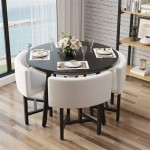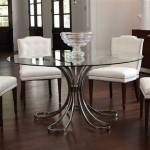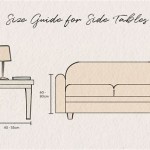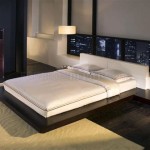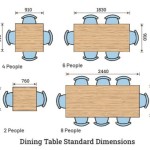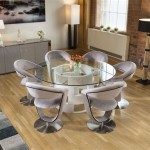Understanding Dining Table Size for 12: Dimensions, Styles, and Considerations
Selecting a dining table represents a significant decision for any home. Beyond its functional purpose as a surface for meals, the dining table serves as a central point for gatherings, celebrations, and everyday interactions. When accommodating larger groups, such as 12 people, the choice of dining table becomes even more crucial. Not only must the table provide ample space for diners, but it must also fit proportionally within the designated dining area, considering factors such as traffic flow, aesthetics, and overall comfort.
This article delves into the specifics of dining table sizes suitable for seating 12 individuals, explores various styles and shapes, and outlines critical considerations for selecting the optimal table for a given space. The primary objective is to provide comprehensive information facilitating informed decisions regarding the purchase of a dining table that meets both functional needs and aesthetic preferences.
Key Point 1: Determining Optimal Dimensions for a 12-Person Dining Table
The dimensions of a dining table designed to comfortably seat 12 people are paramount. A general guideline suggests allocating approximately 24 inches of width and 12 inches of depth per person at the table. This allocation ensures sufficient elbow room and adequate space for place settings without overcrowding. Based on these figures, the minimum length for a rectangular dining table accommodating 12 people would be approximately 12 feet (144 inches). However, this is a minimum requirement, and slightly larger dimensions are often preferred for enhanced comfort and visual appeal.
For a rectangular table, a width of at least 48 inches is recommended. This width allows for comfortable placement of serving dishes in the center of the table, without infringing on individual diners' space. Therefore, a rectangular dining table designed for 12 should ideally measure around 144 inches long and 48 inches wide. Larger dimensions, such as 168 inches in length or 54 inches in width, can further enhance the dining experience, offering additional space for elaborate centerpieces or buffet-style serving arrangements.
Round and oval tables present alternative options for seating 12. The diameter of a round table designed for 12 should be at least 72 inches. However, a diameter closer to 84 inches offers a more comfortable experience. Oval tables, similar to rectangular tables, require a length of approximately 144 inches, but the width can be slightly narrower than that of a rectangular table, often around 42-48 inches, depending on the specific design and desired seating arrangement.
It's crucial to remember that these are guidelines. The ideal dimensions might vary slightly based on chair size, individual preferences for personal space, and the overall aesthetic of the dining room. Measuring the available space and considering the scale of existing furniture is essential before finalizing a purchase.
Key Point 2: Exploring Different Styles and Shapes
Beyond dimensions, the style and shape of the dining table significantly impact the overall ambiance of the dining area. Rectangular tables represent the most common choice for seating larger groups. Their linear design facilitates efficient use of space and complements a wide range of interior design styles, from traditional to contemporary. Rectangular tables are well-suited for formal dining rooms and often feature leaves or extensions, allowing the table to be adjusted in size to accommodate varying numbers of guests.
Round tables offer a more intimate and conversational dining experience. The circular shape encourages interaction and evenly distributes focus among diners. This makes round tables particularly suitable for social gatherings and family meals. However, round tables require more floor space compared to rectangular tables and may not be as efficient for serving large platters of food.
Oval tables combine the benefits of both rectangular and round tables. The elongated shape of an oval table allows for efficient use of space, similar to a rectangular table, while the curved edges promote a sense of intimacy and visual softness, similar to a round table. Oval tables are often considered a more elegant and sophisticated option, suitable for both formal and informal dining settings.
Square tables for 12 are less common but can be achieved by arranging smaller square tables together. This modular approach allows for flexibility in seating arrangements and can be particularly useful in larger, more open dining spaces. However, ensuring that the tables are securely connected and level is crucial for a safe and comfortable dining experience.
The choice of materials also contributes to the overall style of the dining table. Wood remains a popular choice for its warmth, durability, and versatility. Different types of wood, such as oak, maple, walnut, and cherry, offer varying grains and finishes, allowing for customization to match existing décor. Glass-topped tables provide a modern and minimalist aesthetic, creating a sense of spaciousness and lightness. Metal tables offer a sleek and industrial look, often paired with wooden or upholstered chairs for contrast.
Key Point 3: Crucial Considerations for Selecting a Dining Table
Several crucial considerations extend beyond dimensions and styles when selecting a dining table for 12. The available space in the dining area is paramount. Measure the room carefully, paying attention to the length, width, and any architectural features that might obstruct traffic flow. Allow at least 36 inches of space between the edge of the table and any walls or surrounding furniture to ensure comfortable movement around the table. A minimum of 48 inches is preferable to accommodate individuals passing behind seated diners.
Consider the existing décor and style of the dining room. The dining table should complement the existing furniture, color scheme, and architectural details. A traditional dining room might benefit from a classic wooden table with ornate details, while a contemporary dining room might be better suited for a sleek glass-topped table with metal legs. Maintaining a cohesive aesthetic enhances the overall visual appeal of the space.
The type of seating is also a critical factor. The chairs should be appropriately sized and styled to complement the dining table. The height of the chairs should allow for comfortable legroom and proper posture at the table. Upholstered chairs offer added comfort, while wooden chairs provide a more traditional and formal look. Ensure that the chairs can be easily tucked under the table when not in use to maximize space in the dining area.
The durability and maintenance requirements of the dining table should also be considered. Solid wood tables are generally more durable and long-lasting but may require periodic refinishing or polishing. Glass-topped tables are relatively easy to clean but may be susceptible to scratches or chips. Metal tables are highly durable and resistant to damage but may require special cleaning products to maintain their appearance. Consider the level of maintenance required and choose a table that fits the lifestyle and habits of the household.
Budget is another important consideration. Dining tables for 12 can range in price from relatively affordable to significantly expensive, depending on the materials, craftsmanship, and brand. Setting a budget beforehand helps to narrow down the options and ensures that the chosen table aligns with financial constraints. Exploring different retailers and comparing prices can help to find the best value for the investment.
Finally, consider the potential for future expansion or changes. If the dining room is likely to undergo renovations or if the household anticipates a change in the number of occupants, choosing a table with leaves or extensions can provide added flexibility. This allows the table to be adjusted in size to accommodate varying needs and ensures that the investment remains relevant over time.
By carefully considering these factors, individuals can make informed decisions regarding the selection of a dining table for 12 that meets their specific needs, preferences, and budgetary constraints. The right dining table can transform a dining area into a welcoming and functional space for gatherings, celebrations, and everyday meals, enhancing the overall quality of life for the household.

Pin By Rebecca Hinojosa On Home Ideas Dining Table Sizes 12 Person 6 Seater

4 Steps For Buying A Dining Table Guide Sizes Rustic Home Decor Shelves

Table Dimensions Yahoo Search Results Image Large Dining Room Sizes

How To Choose The Size Of A Table

How To Calculate The Best Dining Table Size For Your Room

Stylish And Versatile Round Dining Table For Large Gatherings

Dining Table Sizing Guidelines Taitlin Studio

Table Dimensions Yahoo Search Results Image Large Dining Room Sizes

How To Choose The Right Dining Table Size

Large Dining Table Seats 10 12 14 16 People Huge Big Tables

